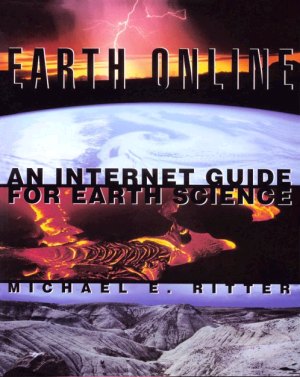|


|
About the Course: |
The PDF version of class
syllabus is available here |
Click below to download for
free
|
|
This 3-unit "College
Transfer"
Lecture
course |
 |
examines the materials and
physical features of the earth's surface, their evolution over time through
the dynamic interactions of processes driven by earth's
internal energy system and those at the solar-terrestrial interface,
and the related issues like earth hazards, environment and resources;
and |
 |
satisfies the general
education requirement in physical sciences for the baccalaureate
degree programs in North American universities and colleges. |
|
|
After successfully completing
this course, therefore, you should be able to
 |
describe the forces that
shape our natural environment, even in situations where the underlying
processes are too sluggish and too large-scaled to be amenable to
direct physical experimentation and testing; |
 |
analyze the 'how' and 'why'
of the distribution of earth resources that enable us to intelligently
search for coal and iron deposits without which industrial age would not
have been possible, oil and natural gas without which the modern
technological society is hard to imagine, the water and soil resources
without which the food needs of our ever growing population would be
impossible to sustain, even sand and gravel for construction; |
 |
explain how the fatalities
from such geological hazards as earthquakes, volcanoes, floods, coastal
erosion, collapsing ground surfaces, landslides, and the like, can indeed
be minimized and thus develop the ability to evaluate different fatality
mitigation programs in terms of the validity of their underlying
scientific assumptions; and |
 |
establish the
geological connections that bridge meteorology, ecology, biology, physics,
chemistry, economics and ethics to form the basis for our efforts to
prevent environmental degradation. |
The course should therefore
sharpen your skills of critical reasoning and articulation.
|
|
Schedule for Lectures, Tests and Final Exam
(800 – 1010 AM, CS-266) |
|
|
July 25, 26, 27, 28
and 29: |
|
Preview
of the Course |
|
Chapters 1
(Introduction), 2 (Matter and Minerals), 3 (Igneous Rocks),
4 (Volcanoes and Other Igneous Activity), 5 (Weathering and Soil) and 6
(Sedimentary Rocks) |
Class-Test 1:
August 1 (8-9 AM) |
|
August 1, 2, 3, 4 and 5:
Chapters 7
(Metamorphism and Metamorphic Rocks), 8 (Geologic Time), 9 (Mass Wasting),
10 (Running Water) and 11 (Groundwater) |
Class-Test 2:
August 8 (8-9 AM) |
|
August 8, 9, 10, 11 and 12:
Chapters 12
(Glaciers and Glaciation), 13 (Deserts and Winds), 14 (Shorelines), 15
(Crustal Deformation) and 16 (Earthquakes). |
Class-Test 3:
August 15 (8-9 AM) |
|
August 15, 16, 17, 18 and 19:
Chapters 17
(Earth’s Interior), 18 (The Ocean Floor), 19 (Plate Tectonics) and 20
(Mountain Building and the Evolution of Continents) |
Class-Test 4:
August 22 (8-9 AM) |
|
August
22, 23 and 24: Chapters 21 (Energy and Mineral Resources) and 22
(Planetary Geology) |
Final
Examination:
August 26
(8-10 AM) |
|
August 25:
Overall Review of the course |
|
Class and Grading Policies:
 |
DEADLINES: July 29 for ADD/DROP WITHOUT ‘W’, Aug 12 to DROP WITH
AUTOMATIC ‘W’ (dropping after this means an automatic ‘F’) (DROPPING OUT
OF THE COURSE, WITH OR WITHOUT A ‘W’, IS THE STUDENT’S RESPONSIBILITY). |
 |
This
is a COLLEGE TRANSFER COURSE. Therefore, the class will rely heavily on
discussions and analyses of the ongoing processes of oceanographic
interest. YOUR SUCCESS WILL DEPEND ON THE NOTES YOU TAKE IN THE CLASS,
YOUR READINGS BEFORE AND AFTER THE CLASS, AND ON YOUR PARTICIPATION IN
THE DISCUSSIONS. Also (a) there will be no homework or assignments, (b)
an attendance below 70% will invite and F, and (c) so will even a
suspicion of “cheating” and/or any other instance of disruptive and/or
anti-social behavior that can also earn you negative points. |
 |
For final grading (A > 90% > B > 80% > C > 70% >
F), best 3 of the 4 Class-Tests will account for 60% of the overall
grade, the comprehensive Final Examination for 30%, and presence and
participation in the class, that may be also measured through
pop-quizzes, for the remaining 10%. Also, to secure the grade A, a
student should have secured 90% marks in at least 2 of these
Class-Tests. Note that, while each of the Class-Tests will be scantron
based, in addition to two short notes, the comprehensive Final
Examination will require a “blue book” and will comprise one essay and
two short notes. |
 |
Videos: You may also wish to browse the corresponding episodes in “EARTH
REVEALED” videos available at the Learning Center.
|
 |
Any
“Extra Credit” work ― an ORIGINAL essay or term paper or research paper,
project or report ― will be graded on a -5 to +5 scale. Such a grading
will be done only in marginal cases and therefore at the time of the
Final grading. |
|



